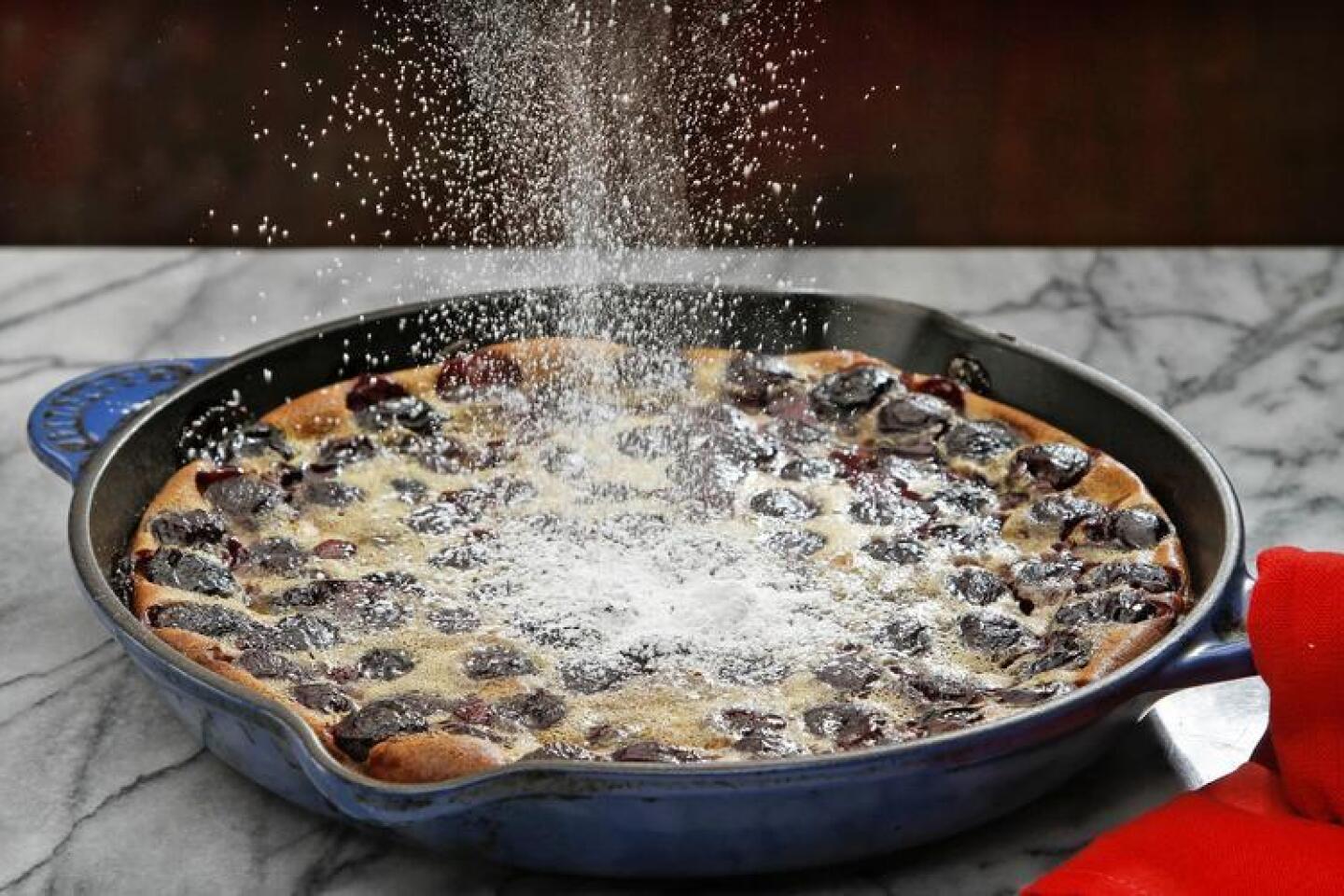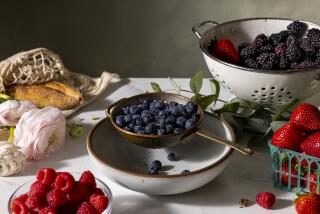12 great recipes for cherries
- Share via
The sight of sweet cherries at the market is enough to send most of us into overdrive, even in the best of times. Last year was anything but, but still, a little patience will be rewarded.
Last year was the California cherry harvest that didn’t happen – because of warm winter weather, state farmers picked about one-third as many cherries as they would in a normal year. If you blinked they were gone.
This year’s winter was warm as well, but the cherry crop is looking a lot better. It’s still short of an average year, but compared to 2014, it seems like a bonanza.
But tempted as you might be to pick up the first box of cherries you see, wait a little bit.
The first varieties that come in, mainly Burlat and Brooks, can be decent in perfect weather, but in just a week or so you’ll start to see Bings, and shortly after that the blushing Royal Anne and Rainier. These are cherries with real zing.
Though the modern world of fruits and vegetables seems relentlessly focused on the newest varieties, specially bred for a variety of reasons that rarely have anything to do with flavor, there are a few hardy old-timers around. And one of the best is the Bing cherry.
Grown for more than 100 years and still by far the predominant commercial cherry, Bings have just about everything you could want — they’re sweet with bright acidity and real depth of flavor. When they’re at their peak they’re almost crunchy, bursting with cherry juice.
The other types of cherry you’re most likely to find are the Queen Anne and the Rainier cherry. These grow nearly identical fruit that is a lighter “cherry” red with a golden cream blush. The flavor is generally a little sweeter and not quite as rich as a Bing.
The Queen Anne is actually older than the Bing, but the Rainier is a modern development. Well, relatively speaking — it was introduced in 1952. Still, it’s good enough that we shouldn’t hold its youth against it.
Here are 12 cherry recipes to get you started.
How to choose: Look for cherries with firm, shiny, smooth skins. Usually the darker the red the better (with the most common varieties, this is a sign of ripeness). Also check the stems. They should be green and flexible; they turn brown and woody in storage.
How to store: Refrigerate cherries in a tightly sealed plastic bag. They’ll last a couple of weeks (at least theoretically; you’ll probably have eaten them by then).
Are you a food geek? Follow me on Twitter @russ_parsons1
More to Read
Eat your way across L.A.
Get our weekly Tasting Notes newsletter for reviews, news and more.
You may occasionally receive promotional content from the Los Angeles Times.













